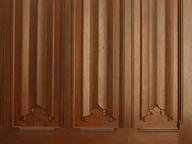Quiz Answer Key and Fun Facts
1. What is a large axe with a short handle that is used to hew logs flat?
2. What do you pound into a log to split it into fence rails or just to split it in half?
3. What hatchet is sharpened like a chisel and can turn a split log into a 4"x4"?
4. What tool smooths the surface of large logs better than a broadaxe, if you're careful not to slice your foot?
5. What do two people use to cut a tree or timber to the right length?
6. What could you use to pound in wedges, or to convince a timber frame to fit together?
7. What can you use to split wood into thin shingles or clapboards?
8. Where do you rest the bottom of the wood, when using a hewing hatchet?
9. When you want wood smoother and flatter than a hewing hatchet or adze can produce, what hand tool do you use?
10. What makes a decorative rounded edge on the corners of boards?
Source: Author
littlepup
This quiz was reviewed by FunTrivia editor
Bruyere before going online.
Any errors found in FunTrivia content are routinely corrected through our feedback system.

